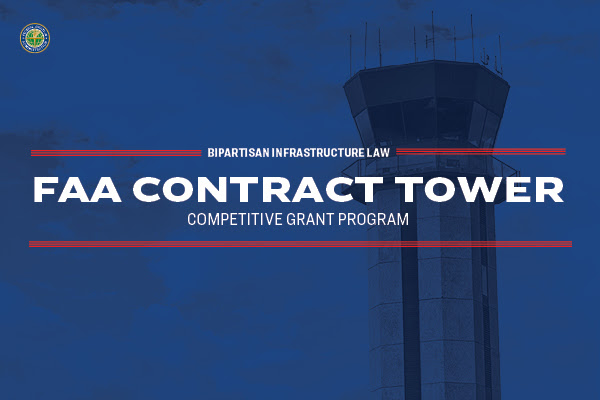The Federal Aviation Administration has opened the application process for Bipartisan Infrastructure Law funding to modernize air traffic control towers at many small town and municipal airports. The FAA will fund projects that sustain, construct, repair, improve, modernize, replace or relocate airport-owned towers and install communications equipment.
“Residents of smaller and rural communities rely on aviation to get where they need to go. This funding will help ensure that air traffic is safe and reliable in communities across America,” said U.S. Transportation Secretary Pete Buttigieg.
The FAA Contract Tower Competitive Grant program provides $20 million annually for five years within the newly established Airport Infrastructure Grant program. Grants awarded under this program are at a 100 percent federal participation. No airport match is required.
There are currently around 156 airports with air traffic control contract towers eligible for this funding. These towers are staffed by employees of private companies rather than by FAA employees. The FAA pays for the services on a contract basis. The FAA’s Contract Tower Program began in 1982 to allow the agency to contract out the operation of certain low-activity towers.
“This funding will allow airport sponsors to build or repair their facilities to meet safety standards and be environmentally friendly and sustainable,” said FAA Associate Administrator of Airports Shannetta Griffin.
Airports are encouraged to submit eligible projects as soon as possible but must do so by May 16, 2022.
The President’s Bipartisan Infrastructure Law, also known as the Infrastructure Investment and Jobs Act, is the Biden-Harris Administration’s plan for building a better America with a $1.2 trillion investment in our nation’s infrastructure and competitiveness. It will rebuild America’s roads, bridges and rails, upgrade and expand public transit, modernize the nation’s ports and airports, improve safety, tackle the climate crisis, advance environmental justice and invest in communities that have too often been left behind. It will drive the creation of good-paying union jobs and grow the economy sustainably and equitably so that everyone gets ahead for decades to come.



